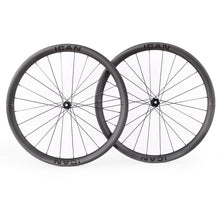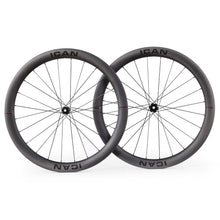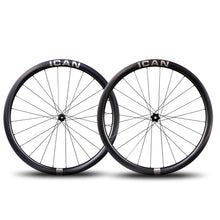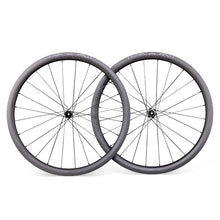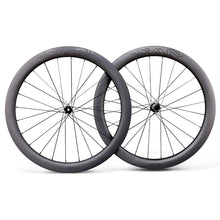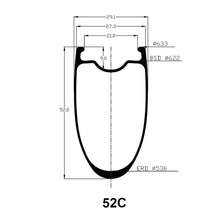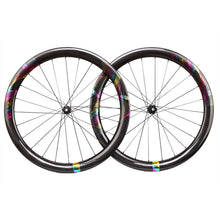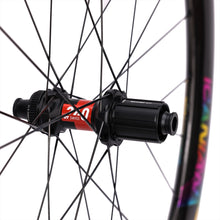News
Mountain Bike Buyers Guide 2019
Mountain biking used to be simple. You bought what was essentially a road bike with flat bars, and you went and rode
about on a mountain. Sure, there were times when you had to hold on for dear life, wonder if you had really pulled your
brakes, and the arm pump was intense.
Slowly mountain bikes got better. Some got suspension, some got fat, some got slack, and some got super light. All of
these changes make buying a mountain bike in 2019 confusing. To help ease this confusion we’ve put together a guide
to our mountain bikes for 2019.
TABLE OF CONTENTS
- What style of mountain bike do I need?
- What are mountain bike frames made from?
- Suspension
- Fork
- Wheel and tire
- Groupset
- Component Details
- Mountain Bike Fit
- Budget
What style of mountain bike do I need?
Mountain biking has diversified, and now you’ll more than likely be confused about what style of bike you need. The best
way to work out what bike you need is to sit down and think about how you ride. Be honest with yourself, we’ll all like to
slay we’re out there slaying double-diamond black runs, but the reality is that most of us aren't.
You need a bike that suits the majority of riding that you do. You don’t want a full-on downhill bike if you mainly ride flowy blue trails. Buying the wrong style of bike is a great way to hate mountain biking,
so, look through our tips and make sure your mountain biking is always fun.
Trail Bikes
Trail bikes are now the most ubiquitous style of mountain bike. They will generally be able to handle some of the rougher
stuff, and they’ll still be light enough that they can cross in XC territory. They’ll be slightly slacker than an XC bike, not as
slack as an enduro bike and will have suspension travel that fits somewhere in the middle.
A trail bike will have between 120mm and 150mm of travel. This amount of travel will soften the majority of trails and will
still allow a nice pedaling action and have geometry that you don’t have to be going Mach 10 to appreciate.
A trail bike is a good choice for those of us who want to go and ride a trail center at the weekend with our friends.
Cross-Country (XC) Bikes
Cross-country bikes are designed to be fast. In order to be fast, they’ll be light. They’ll also be designed to pedal well, and for that
reason, they’ll have the least amount of suspension travel on offer. You’ll find between 80mm and 120mm on the majority
of XC bikes.
If you want to race XC, then you’ll definitely want an XC bike. That doesn’t mean they are only good for racing. If you enjoy
getting a load of miles in and taking on huge climbs, then an XC bike is for you. They are great for getting out and riding on
all day, and you’ll not suffer from the extra weight added to the more burly bikes.
All-Mountain/Enduro Bikes
The all-mountain category is becoming the enduro category. Enduro racing has taken off, mainly because it is the form of racing that mimics most closely how the majority of us
ride on a day to day basis.
Enduro bikes have to be able to cope with riding downhill style trails, but they also have to be pedaled uphill. They are more gravity focused than a trail bike and as such will
come with suspension travel between 150mm and 180mm. They will also feature slacker geometry, a burlier design, and a longer wheelbase.
These facts will make riding an enduro bike at slow speeds less fun. They will make the bike seem much more stable at high speed though. You’ll want to get an enduro bike
if you want to race or if you enjoy riding downhill super fast and don’t mind pedaling back up to earn your turns.
Downhill/Park Bikes
These bikes are al about high-speed downhill and hitting huge jumps. As this is there focus, you can expect to be pushing your bike uphill as that is not part of the design sheet. These bikes will not be fun
for long days in the saddle, or a day of cruising trail centers. Park laps and uplift days, they will be the perfect bike.
You’ll find park bikes that are fully rigid dirt jumpers, up to 200mm travel downhill bikes. They are a wide church, and again, you’ll need to pick the one that suits your riding style.
Fat bikes
Fat bikes are a niche all to themselves in mountain biking. They again will be anywhere from rigid models to full suspension models. Their defining characteristic will be their
fat tires, though. These tires allow them to float across the top of surfaces that a standard mountain bike tire will have sunk into and pitched you over the bars.
If you want to read a more in-depth breakdown of the difference between XC and trail bikes, we have a guide, just click the hyperlink. We also have an article you can read on
the difference between trail and enduro bikes.
If you want to know more about fat bikes, we have a fat bikes buyer’s guide.
Have you come to a decision?
You might have already decided which bike you need, but it is best to follow up by asking yourself a few questions to narrow down the answer to what you need.
- Why do you want to ride a bike?
- Where will you be riding most of the time?
- What is the weather and the terrain like in your area?
- How frequently will you be riding your bike?
- What is more critical for you, speed or comfort?
These questions might lead you to different answers if you want to ride a bike as a fun way to get fit. Then a trail bike might seem like the obvious answer, but if you live
somewhere, that snows a lot and is pretty wet all the time it might be worth looking at a fat bike.
If you live somewhere that is the opposite of that weather then you might find an XC bike is more fun to ride. If you want to ride downhill fast, then an enduro bike might
seem the answer. If your local area is quite tame and flowy then again you could look at an XC bike.
Have a little think and then try and stay away from marketers are trying to sell you. Let your local terrain sell you your next bike.
What are mountain bike frames made from?
Material
Mountain bikes frames are commonly constructed from either carbon fiber, aluminum, titanium, steel or a combination of these materials. These materials all have their
own pros and cons. Steel and aluminum are the most common material choices in the budget to mid ranges of bikes. Then carbon and titanium take over as we reach high-end bikes.
There are a few things to think about when you consider which material you’d like your frames to be constructed using.
- Your weight
- How long you plan on owning your bike
- Your bank account
- Where you will be riding
Steel will be the cheapest material from which to buy a frame constructed. The cheaper steel frames will be strong, but they will be heavy. Steel does get lighter as it gets
more expensive, but it’ll never be as light as a carbon fiber or titanium frame.
Aluminum will be lighter than steel, and it will be slightly more expensive. It will also have a much shorter fatigue life than steel, carbon, and titanium. Titanium is the most
expensive of the metal options, but it will be the lightest.
Carbon fiber used to be as expensive as titanium, but as other companies and ourselves get more efficient at constricting bike frames from it, the price is coming down.
We pass these savings on to you, and other brands may not. You’ll also find that like steel and titanium that carbon doesn’t have a fatigue life, essentially they can all last
forever. The bonus for carbon is that it can build a lighter frame than any of the other materials and still be as strong.
What is “travel” on a mountain bike?
Travel is how far your suspension will compress when a force is applied. The amount of travel a mountain bike frame has allows us to define which category of bike we are
looking at. XC bikes will have the least travel at around 80mm -120mm. Then trail bikes will have around 120mm – 150mm. AM/enduro will have 150mm to 180mm, and we’ll
be looking at 200mm for a downhill bike.
Suspension
Which brings us to what kind of suspension should you use? Picking which brand of suspension you want to use will depend on personal preference. Some of us may prefer
how a RockShox fork moves through its travel than how an MRP fork goes through its travel.
When people describe mountain bikes, they’ll also use a few terms. Hardtail, full suspension, or rigid. Rigid bikes will have no suspension at all. Hardtail means that the frame
has no suspension but that the bike has a suspension fork. Full suspension bikes will have suspension forks and a shock at the back.
Frame spacing
We should also look at the spacing on our frame. Spacing refers to the width of your rear hub. For years mountain bikes used a 135mm rear end, and they used a quick-release axle to hold the wheel on. Then we moved to a thru axle system, originally at 142mm. The thru axle was thicker than a QR and would thread into the frame. This system
allowed us to have stiffer wheels.
Wheel size then increased from 26” to 29”, and then we decided to have a middle size of 27.5”. These bigger wheels were a little less stiff than an old 26’2 wheel. To compensate
for that, we moved to a new rear hub width. We called this size Boost, and the rear axle width is now 148mm, and it only comes with a thru axle. The wider hub width allows a
better spoke angle and this, in turn, creates a stiffer wheel.
Fat bikes will have even more variation in size than standard mountain bikes. You’ll want to double-check what systems your fat bike can use before you think about buying new wheels. We discuss hub spacing in our fat bike article, which is linked above.
Frame Geometry
Frame geometry is also evolving. Gone are the almost road bike angles of the ’90s and instead we now have long, low, and slack mountain bikes. The exception being XC bikes
and fat bikes. These bikes tend to have a more traditional geometry.
Part of the reason for this is that they don’t generally have huge travel suspension systems. As we add more travel, the presumption is that you’re going to take the bike down hills
faster. If we used an XC head tube angle, your bike would feel very twitchy at speed. A slacker angle makes it feel more stable at speed. It does have the effect of making your bike
turn like a tanker at slow speeds though, hence the need for more traditional geometry on XC bikes.
Fork
When you buy a fork, you’ll need to make sure that it fits your bike’s wheel size and hub width. Suspension forks will tell you what size of the wheel they are for. You’ll also need to
make sure that your fork has the same amount of travel as your frame is designed around. Otherwise, you’ll be affecting the geometry of your bike. With rigid forks, you'll need to
get an axle to crown measurement that works for your frame. Boost spacing is not only for the rear of your bike but will also now be a feature on some forks.
A standard mountain bike hub is 100mm wide. Boost hubs are 110mm wide. Fat bike hubs are even wider. The wider spacing is similar to the wider rear spacing. It is designed to
allow you to run a stiffer front wheel.
If you want to make sure you can dial your fork in to suit your riding style you’ll want to make sure that the fork features good control options, such as an external lockout, compression
options, and rebound options.
If your fork is air-sprung, you’ll find it a lot easier to tune and set to your riding style. If you ride a full suspension mountain bike, then you’ll find an air fork will let you tune to match your rear shock in a
much simpler manner than if you have coil forks.
Forks will be built with a niche in mind. So you’ll find that XC forks will have 32mm stanchions, trail bikes 34mm, enduro bikes 36mm, and then downhill bikes will have 40mm stanchions.
As with everything in life, there will be exceptions to this rule, but it worth remembering.
Wheel and tire
In the mountain bike world, there are 3 main styles of wheels.
- 26”
- 5”
- 29”
Each of these sizes has its own pros and cons. 29” wheels are faster and roll over more than the other 2 sizes, but they are less maneuverable in tight spaces and tech trails. 26” wheels
are slower but way more maneuverable than a 29” wheels. The 27.5” wheel size is designed to be the meeting point between the 2 other standards.
Boost and plus standard
As we have mentioned, many wheels have gone wider thanks to Boost technology. Some manufacturers have taken this wide standard and then created plus sized tires. Plus sized
tires are wider than standard tires but narrower than fat bike tires.
The wider tires are designed to give you the extra grip and flotation of fat bike tires, but remove the extra weight that you’ll need to carry around. You will need to make sure that your
frame and fork can clear wider tires before you try and run them.
Should you go tubeless?
Yes. Anyone who wants to take mountain biking seriously should go tubeless. You’ll be able to lower pressures, as you won’t be susceptible to pinch flats like you would with tubes.
These lower pressures will bring you more grip, and we all want when we are mountain biking.
By ditching tubes, you’ll save some weight. With the added sealant getting punctures as you ride through the woods will become a distant memory. You’ll want to make sure that your
wheels are tubeless-ready and so are your tires if you want to make going tubeless as simple as possible.
Which tires should I get?
When buying mountain bike you’ll need to think about a few facets of the tires.
- Tread
- Design
- Compound
- Width
- Weight
- Construction
When you look at tires, most companies will tell you the features that their tires feature. So if you live somewhere wet and muddy, you’ll want to pick a different option from if you live
somewhere dry and rocky.
You’ll find dry weather tires have less aggressive knobs than wet weather tires. Tires for muddy conditions will have a bigger gap between knobs to let the mud clear through, and
hardpack tires will have closer to a file tread.
Some tires will tell you that they’re super sticky. The extra grip of these tires will come at a price as they will wear down much faster than those tires that are not as grippy. You’ll also
want folding tires as the weight of wire bead tires can be more than you expect.
Which groupset do I need?
A groupset is a group of parts that are made to a similar level of quality and price. A modern mountain bike groupset comprises of shifters, possibly a front derailleur, a rear derailleur,
a cassette, bottom bracket, crankset, and a chain. Sometimes you’ll also find that a set of brakes are included in a groupset, but that is becoming rarer.
The front derailleur is becoming rarer as many companies are opting only to sell 1x groupsets. Due to brands now having 12-speed options, and 13-speed option starting to become a reality, there is less need for a double or triple front chainset. The theory is that maintenance and chain wear should be saved by only using a 1x drivetrain.
Bottom bracket standards
There are many standards in mountain bike bottom brackets. There are varying shell widths, and there are differing ways to attach your bottom bracket to the frame. A 73mm wide
bottom bracket shell that had threads in it was the good old way to attach a bottom bracket. We refer as a BSA style bottom bracket. It will also sometimes be referred to as an external
bottom bracket.
With fat bikes, you can thread bottom brackets up to 120mm wide. Then we have press fit bottom brackets, and they come in a multitude of standards. BB92 is the press fit version of
the standard 73mm external bottom bracket. There are also various versions based around 30mm crank spindles such as BB30 and PF30.
You’ll need to make sure you make the correct choice for your frame and parts. You will also need to know if you have Boost spacing for your rear wheel as you’ll need to get a Boost
specific crankset to bring you the correct chain line for your bike.
Brakes
Once you get above $500 for a mountain bike, you’ll find that it has hydraulic disc brakes. Hydraulic disc brakes will bring you better-stopping power than other braking systems, useful if you want to stop quickly before a cliff edge.
Most hydraulic brakes will be tiered. You’ll start with basic units that as the price goes up, you’ll find better features and lighter weight. One of the biggest upgrades you can is from 2
pot to 4 pot, and you’ll find a lot more stopping power with 4 pot brakes.
If you need to service your brakes, you’ll need to know if you need either mineral oil or DOT for your brakes. If you’re working with DOT, you’ll need to be careful not to spill it, or you
may lose some paint from your bike.
Freehubs
If you need a new cassette, and you will at some point, then you’ll need to know which freehub style you need. We all used to use a style of Shimano HG freehub then SRAM decided
they wanted to use a 10t cog to help give a bigger gear for 1x setups. As a 10t cog was too small for an HG driver, they then created their XD driver. The XD driver uses different cassettes
from the HG style so you’ll want to make sure and get the correct one.
To further complicate this area, Shimano is now slowly filtering in a new standard that they are calling Micro-Spline. Micro-Spline at the moment though is still very niche, and not many people are likely to be using it.
Shimano or SRAM?
Shimano and SRAM are the two biggest brands providing groupsets for mountain bikes. Internet forums are full of people battling out over which brand they prefer. There is no right and
wrong answer to which is better. It will come down to your personal preferences, either will be a great choice.
- Shimano has been around for a long time and is the number 1 groupset provider for off the shelf bikes. The Japanese manufacturer takes in around 70-80% of the global cycling
- component market.
- SRAM is a new player in the mountain bike market but has innovated and gone 12 speed before Shimano and brought us the 1x revolution.
Which components?
Brakes
As well as working out which brakes you want to run, you might also want to think about rotors and then what size of mounts you may need. With rotors, you’ll find that your forks and
frame will have a maximum size they can fit. Downhill bikes will be able to take a 203mm rotor, and most other mountain bikes will fit a maximum 180mm rotor.
As well as making sure the rotor will clear you may need to get an adaptor mount to fit your caliper. The mount is designed to get the brake caliper in the correct place to clamp the rotor
to slow you down. It may also be used to turn IS mounts into Post mounts to fit your caliper of choice. IS mounts are 51mm apart, and post mounts are 74mm apart. The bike trade is
moving towards only using post mounts on mountain bikes.
Handlebars
Handlebar width in mountain biking is one of those things that is affected by fashion. One year they will be wide, the next narrow. You’ll also find that they tend to be made from aluminum
or carbon. Both of these materials are picked due to their lightweight.
Aluminum bars tend to transfer trail shock to your hands, and carbon will tend to numb down the amount of trail chatter that is heading for your hands. Carbon will also be a little lighter
and a lot stiffer, great when your pushing and pulling on a climb.
Saddles
Buying a saddle on a mountain bike is not as terrible an experience as it is for a road bike. On a road bike, you’ll pretty much sit on your saddle for hours. On a mountain bike ride, you’ll
be up, down, and moving around. There will also be times when you’ve used your dropper, and the saddle is sitting pretty much on your top tube, and you’ll be hanging off the back of your bike.
Mountain Bike Fit
Similar to the saddle your mountain bike fit will need to be dynamic, on a road bike you’ll be in the saddle a lot, and as we said on a mountain bike, you’ll be moving around a lot. When
you’re sitting on your bike, you’ll want a small bend in your knee when your pedal is at the bottom of its stroke. You’ll want your arms to feel relaxed and have a small bend in your elbows.
Start from there and tune parts as you listen to your body.
How are mountain bikes sized?
Every manufacturer does this differently. The best way to find the size you’re looking for is to check the geometry sheet. Given the most bikes are now running a low top tube, standover
is less important than it used to be and a more important metric might be the top tube length. Knowing that you won’t be too stretched out or too cramped will allow you to have full control.
The lower top tube and seat tube will mean you have plenty of scape for raising and lowering a seat post provided you get the correct reach. Changing your stem to get the correct length
will have a bigger effect on how your bike rides compared to raising or lowering your saddle by a centimeter.
A general rule of thumb though is
- XS: Bike size 13-14in: generally for riders between 5ft and 5ft 4in
- S: Bike size 14-16in: generally for riders between 5ft 4in and 5ft 7in
- M: Bike size 16-18in: generally for riders between 5ft 7in and 5ft 10in
- L: Bike size 18-20in: generally for riders between 5ft 10in and 6ft 1in
- XL: Bike size 20-22in: generally for riders over 6ft 1in
Please remember though that this list is not an exhaustive answer and different companies will have different answers.
Budget
The best bike is the one that you can afford. That doesn’t just mean the price of the bike. Can you also afford all the peripherals? Clothing, helmet, knee pads, servicing, and tools, all of
these things will need to be thought about as well.
There is no point buying a bike with Shimano XTR if you can only afford Deore in the future. It is always better to upgrade your bike than have to downgrade it as time goes on.
45 comments
-
Posted on by
-
Posted on by
-
Posted on by
-
Posted on by
-
Posted on by
- Previous
- 1
- 2
- 3
- …
- 9
- Next
